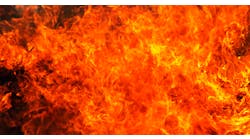While additive manufacturing introduces various advantages to metalcasting operations, AM is a wider area of technological development, capable of producing materials and parts that metalcasting (so far) simply cannot produces, such as "amorphous metals." Two manufacturing partners, Heraeus Amloy and Trumpf, are working to develop production-scale additive manufacturing (3D printing) of amorphous metal.
Amorphous metals are solid alloy materials with a crystalline structure, and while they often are called "metallic glass," amorphous metal is much stronger than steel, but lighter and more elastic. They have good electrical conductivity, and exhibit isotropic behavior, which means their material properties remain identical, regardless of the direction in which the 3D printer builds the workpiece.
In addition to creating sturdy parts, 3D printing grants unusual freedom to designers. Aerospace, mechanical, and medical engineers could take advantage of amorphous metals to 3D-print parts that are precise and complex, as well as "biocompatible."
“3D printing of amorphous components in industry is still in its infancy. This new collaboration will help us speed up printing processes and improve surface quality, ultimately cutting costs for customers. This will make the technology more suitable for a wider range of applications, some of which will be completely new,” according to Heraeus Amloy's Jürgen Wachter.
Amorphous metals are formed by cooling molten metal very quickly, and 3D printing is available to render them build into large, complex parts – which casting and other forming processes are not always available to do.
3D printing also optimizes material use and weight distribution, and the combination of 3D printing and amorphous metals can reduce component weights, an increasingly common objective. 3D printing also promotes unitary design, which helps to avoid fabrication and assembly costs.
In their partnership, Heraeus Amloy is contributing its skill in production and processing of amorphous metals, while Trumpf provides 3DP expertise. Heraeus Amloy has optimized its amorphous alloys for 3D printing and tailored these material for use with the Trumpf TruPrint systems. The TruPrint 2000 machine is designed so that excess powder can be prepared in an inert-gas environment for the subsequent building process. This protects the powder from oxidation or other adverse reactions.
Trumpf improved the productivity of the TruPrint 2000 with two 300-watt lasers to scan the machine’s entire build chamber in parallel. Using a laser focal diameter of 55 micrometers, users can conduct both low and high-volume production of amorphous parts with extremely high surface quality. The “Melt Pool Monitoring” function automatically monitors the quality of the melt pool, so any errors in the process are spotted at an early stage.
Manufacturers that are operating a Trumpf 3D printer can use it now to process zirconium-based alloys from Heraeus Amloy. It is also possible to order 3D-printed amorphous parts directly from Heraeus Amloy. The partners hope to make copper- and titanium-based alloys available for 3D printing in the future.










